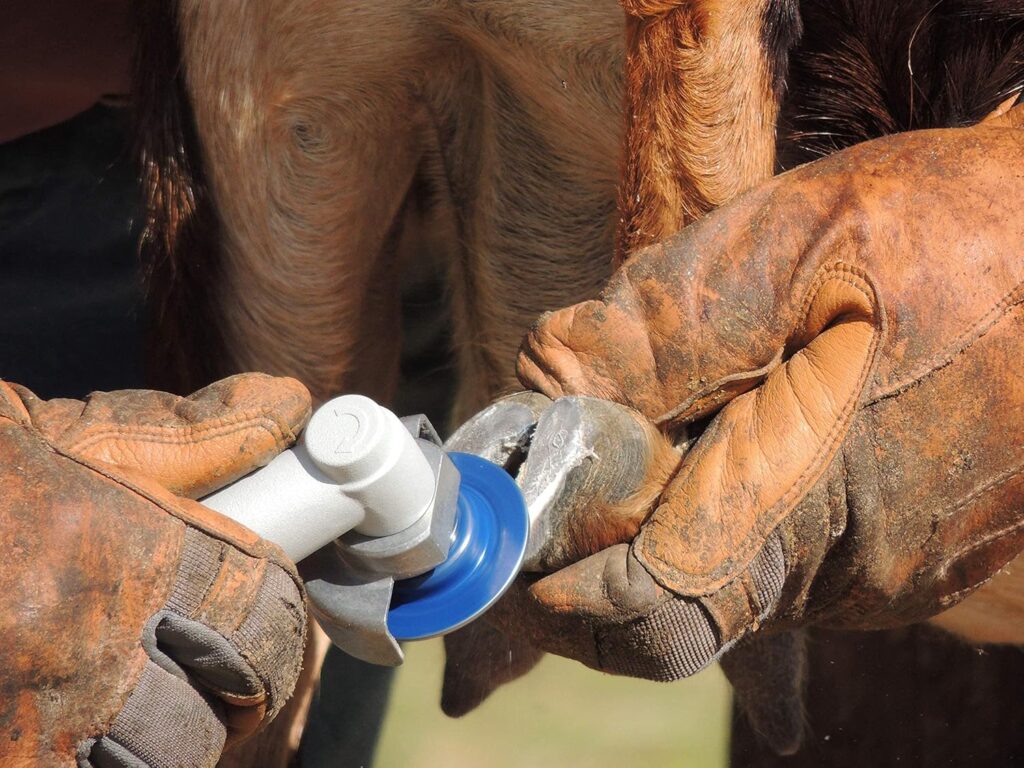Hoof care is a critical aspect of maintaining the health and productivity of goats and sheep. As a farmer or livestock owner, having the right tools and knowledge can make all the difference in preventing lameness and ensuring your animals’ well-being.
Understanding Hoof Anatomy and Growth
To effectively care for your animals’ hooves, it’s essential to understand their structure and growth patterns. A goat or sheep’s hoof consists of two claws, each with a hard outer wall and a softer sole.
The growth rate of hooves varies depending on factors like breed, diet, and environment, but on average, they grow about 3-4 mm per month.
This constant growth necessitates regular trimming to prevent overgrowth, which can lead to lameness, foot rot, and other painful conditions. The primary goal of trimming is to maintain a flat, level sole that allows for even weight distribution and natural wear.
The Importance of Regular Trimming
Regular hoof trimming offers many benefits:
- Prevents lameness and discomfort
- Reduces the risk of foot rot and other infections
- Improves overall mobility and grazing efficiency
- Enhances reproductive performance
- Increases longevity and productivity
By incorporating routine hoof care into your management practices, you’ll significantly improve the quality of life for your goats and sheep.
The Evolution of Hoof Trimming Tools
Hoof care practices have come a long way since ancient times when farmers used sharpened stones and bones. The 18th century saw the development of specialized farrier tools, laying the groundwork for modern hoof trimmers.
Today, we have a wide array of options, from manual bypass pruners to electric rotary tools.
Manual vs. Electric: Choosing Your Weapon
The debate between manual and electric trimmers is ongoing in the farming community. Each type has it’s advantages and drawbacks, and the best choice depends on your specific needs and circumstances.
Manual Trimmers
Manual trimmers, such as bypass pruners, offer several benefits:
- Precision and control
- Quiet operation
- No need for power sources
- Generally more affordable
- Ideal for small flocks or beginners
Electric Trimmers
Electric trimmers can significantly speed up the process, especially for large herds. They offer:
- Faster trimming times
- Reduced physical strain on the operator
- Consistent cutting power
- Ability to handle tough, overgrown hooves more easily
For those new to hoof trimming or with a small flock, starting with a high-quality manual trimmer is often the best approach. As you gain experience and if your herd size increases, you can consider investing in an electric model.
Top Manual Trimmers on the Market
When selecting a manual hoof trimmer, look for models with sharp, durable blades and comfortable grips. Here are some top-rated options:
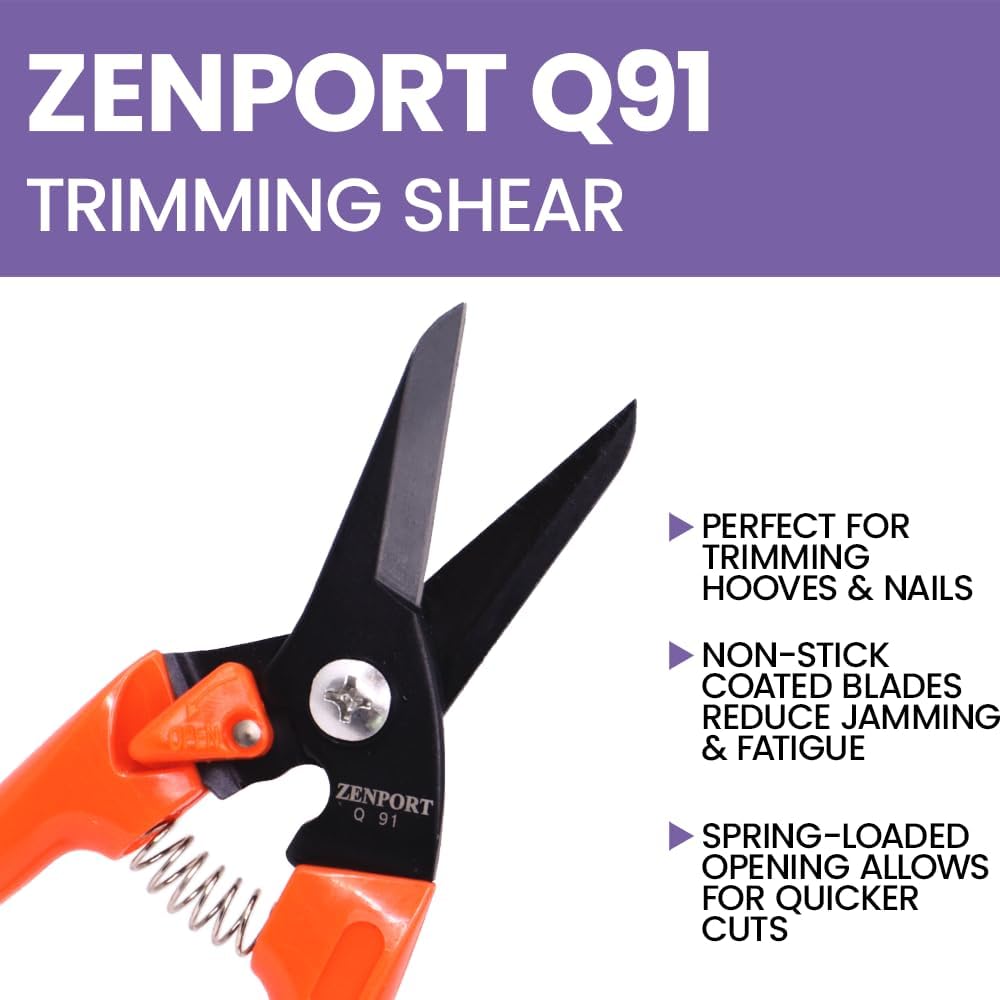
The Zenport Hoof Trimmer is a favorite among small-scale farmers. It’s sharp, durable blades and comfortable grip make it an excellent choice for regular use.
The bypass design allows for clean cuts without crushing the hoof, reducing the risk of injury.
2. ARS 140DX Professional Hoof Trimmer
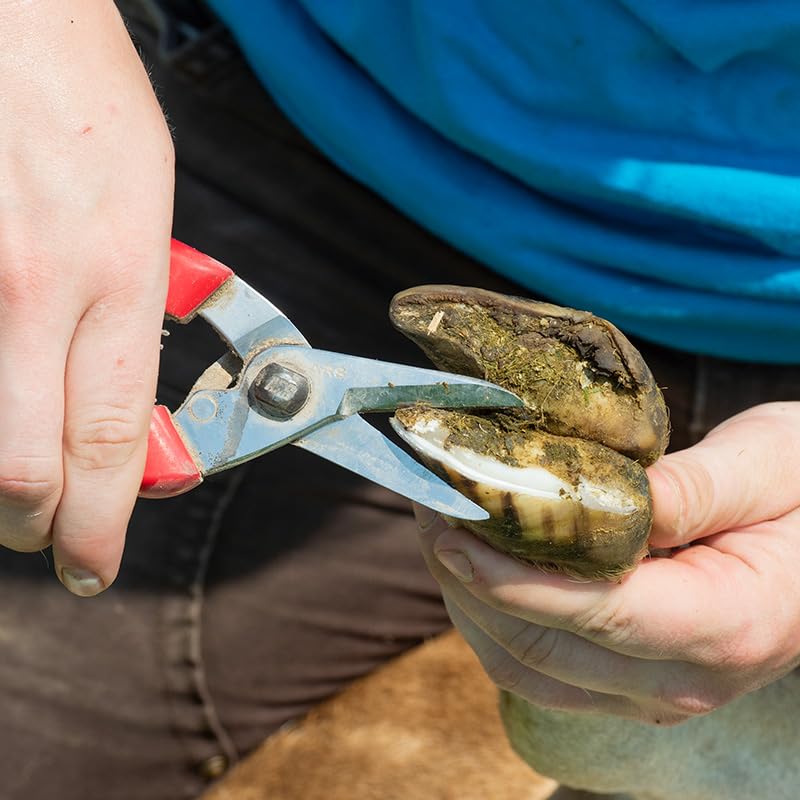
This model features high-carbon steel blades and an ergonomic design, offering precision and comfort for extended use. The ARS 140DX is known for it’s durability and ability to maintain a sharp edge even after multiple trimmings.
3. Shear Magic Hoof Trimmer
The Shear Magic Hoof Trimmer stands out with it’s innovative pivoting head, allowing for easier angling during trimming. This feature can be particularly helpful when working on difficult angles or with animals that are less cooperative.
Electric Options for Efficiency
For larger herds or professional use, electric trimmers can significantly increase efficiency. Here are two popular options:
1. Hoof Boss – Goat Hoof Trimmers Basic Electric Set 110v
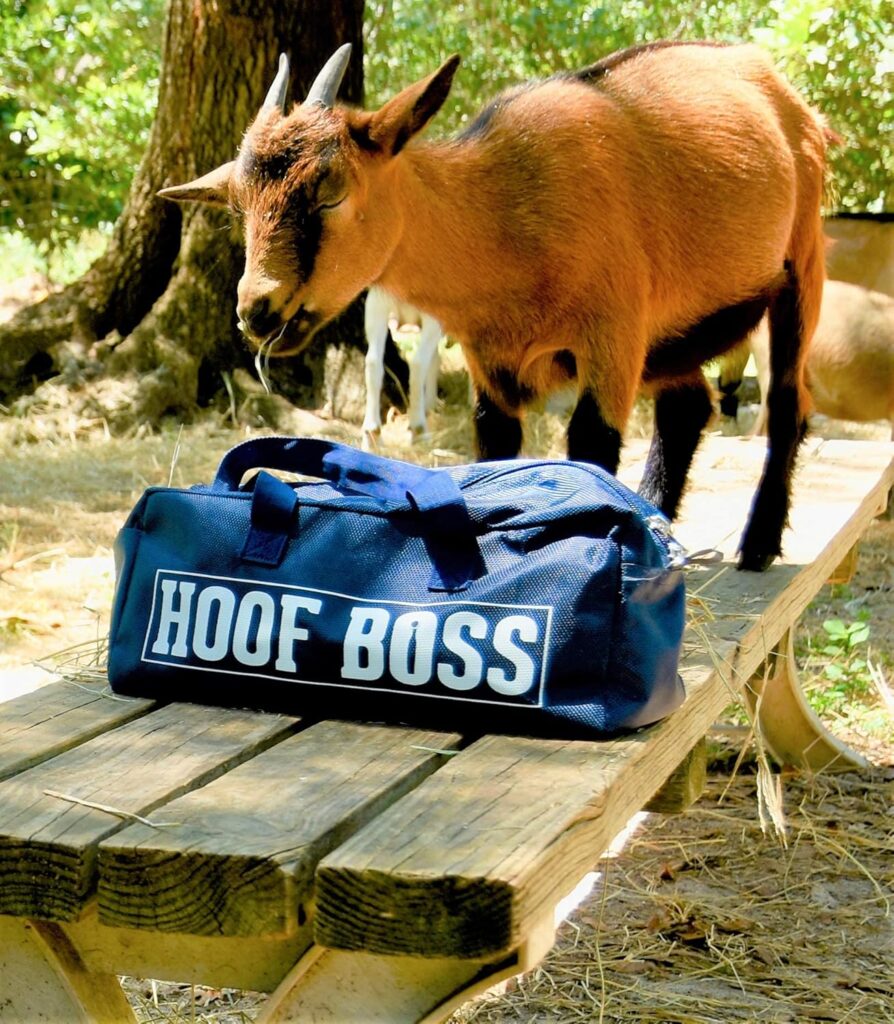
The Hoof Boss is a powerful, professional-grade tool that can handle large herds with ease. It’s robust motor and sharp blades make quick work of even the toughest hooves.
The ergonomic design helps reduce operator fatigue during long trimming sessions.
2. Dremel 8250 Cordless Rotary Tool
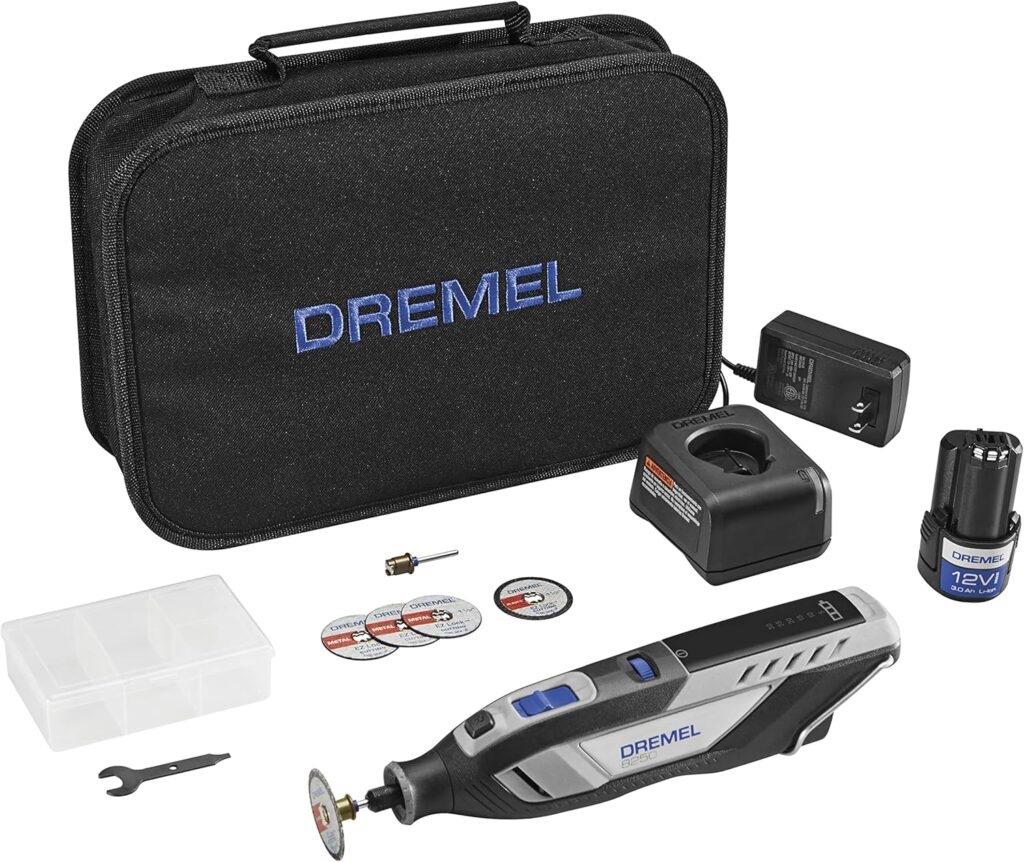
While not specifically designed for hoof trimming, many farmers swear by the Dremel 8250’s versatility and effectiveness. It’s cordless design offers freedom of movement, and various attachments allow for different trimming techniques.
However, it needs more skill and care to use safely compared to purpose-built hoof trimmers.
The Art of Proper Trimming Technique
Having the right tool is only half the battle. Proper technique is crucial for effective and safe hoof trimming.
The ‘Dutch method’ has gained popularity in recent years for it’s focus on maintaining a flat weight-bearing surface.
Step-by-Step Guide to the Dutch Method
- Clean the hoof thoroughly to remove dirt and debris.
- Trim the toe to the fix length, usually about 1.5 inches for adult sheep and goats.
- Level the sole, ensuring it’s flat and parallel to the coronary band.
- Trim the heel to the same level as the toe.
- Remove any flaps or pockets in the white line area.
- Smooth any rough edges.
Remember, the goal is to mimic the wear pattern of a hoof on natural, rocky terrain. This approach promotes even weight distribution and natural wear, reducing the likelihood of lameness and other hoof-related issues.
Tips for Successful Trimming
- Work in a well-lit area to confirm you can see clearly.
- Use a trimming stand or proper restraint techniques to keep the animal still and comfortable.
- Take breaks to avoid fatigue, which can lead to mistakes.
- Always trim conservatively, removing small amounts at a time.
- Observe the animal’s gait after trimming to confirm you haven’t over-trimmed.
Common Pitfalls and How to Avoid Them
Even experienced farmers can make mistakes during hoof trimming. Being aware of these common pitfalls can help you avoid them:
1. Over-trimming
Over-trimming can expose sensitive inner tissues, causing pain and lameness. Always trim conservatively, removing small amounts at a time.
If you’re unsure, it’s better to leave a bit more than to trim too much.
2. Ignoring Individual Differences
Each animal’s hooves may grow differently because of genetics, diet, or environmental factors. Assess each hoof individually rather than applying a one-size-fits-all approach.
This personalized attention confirms that each animal receives the care it needs.
3. Neglecting Hygiene
Dirty trimmers can spread infections between animals. Clean and disinfect your tools between animals to prevent the spread of foot rot and other contagious conditions.
A simple solution of bleach and water can be effective for disinfection.
4. Improper Restraint
Poor restraint can lead to injuries for both the animal and the trimmer. Invest in a good trimming stand or learn proper restraint techniques.
This confirms safety and makes the trimming process more efficient and less stressful for the animal.
Adapting Your Approach
Different breeds and environments may necessitate adjustments to your trimming technique. For instance, dairy goats often need more frequent trimming than meat goats because of their higher metabolic rates and softer hooves.
Similarly, animals raised on soft pasture may need more aggressive trimming than those on rocky terrain.
Considerations for Different Breeds
- Dairy Goats: Trim every 6-8 weeks because of faster hoof growth and softer hooves.
- Meat Goats: May only need trimming every 2-3 months, depending on their environment.
- Sheep: Frequency can vary widely based on breed and environment, but generally every 6-10 weeks.
Environmental Factors
- Soft Pasture: Animals on lush, soft pastures may need more frequent and aggressive trimming as their hooves don’t wear down naturally.
- Rocky Terrain: Animals on rocky ground may need less frequent trimming but still need regular checks for cracks or uneven wear.
- Wet Conditions: In damp environments, pay extra attention to preventing and treating foot rot during trimming sessions.
Beyond the Basics: Advanced Hoof Care
As you become more proficient in basic trimming, you can explore advanced techniques to further improve your animals’ hoof health:
Treating Hoof Rot
Foot rot is a common and serious condition in sheep and goats. During trimming, you might come across cases that need treatment:
- Trim away all diseased hoof tissue.
- Apply a topical antibiotic or zinc sulfate solution.
- Bandage the hoof if necessary to keep it clean and dry.
- Separate affected animals to prevent spread.
Applying Hoof Blocks
In cases of severe lameness or injury, applying a hoof block can help promote healing:
- Clean and trim the healthy claw.
- Apply adhesive to the block.
- Attach the block to the healthy claw, ensuring it’s slightly higher than the injured one.
- Monitor the animal closely and remove the block after 2-3 weeks.
Dealing with Overgrown Hooves
Severely overgrown hooves need a more cautious approach:
- Trim in stages over several sessions to avoid exposing sensitive tissue.
- Focus on restoring proper shape and angle gradually.
- Monitor closely for signs of discomfort or bleeding.
Honing Your Skills: Practice Makes Perfect
Like any skill, hoof trimming improves with practice. Here are some exercises to enhance your technique:
1. Practice on Discarded Hooves
Before working on live animals, practice on discarded hooves from a butcher. This allows you to familiarize yourself with the structure and practice your cutting technique without the pressure of working on a live animal.
2. Set Up a Trimming Schedule
Create and stick to a regular trimming schedule. This confirms consistent care for your animals and allows you to observe how different animals’ hooves grow over time.
Keep detailed records of each animal’s hoof health and trimming history to track progress and identify patterns.
3. Attend Workshops or Clinics
Seek out workshops or clinics led by experienced trimmers. These hands-on learning opportunities can provide valuable insights and allow you to learn from experts in the field.
Many agricultural extension offices or livestock associations offer such training.
4. Video Your Technique
Record yourself trimming and review the footage. This can help you identify areas for improvement in your technique or efficiency.
You can also share these videos with more experienced trimmers for feedback.
5. Join Online Communities
Participate in online forums or social media groups dedicated to small ruminant care. These communities can be valuable resources for troubleshooting problems, sharing experiences, and staying updated on best practices.
Maintaining Your Tools
Proper tool maintenance is crucial for effective and safe hoof trimming. Here are some tips to keep your trimmers in top condition:
Cleaning
After each use, clean your trimmers thoroughly:
- Remove all debris with a stiff brush.
- Wash with warm, soapy water.
- Dry completely to prevent rust.
Sharpening
Dull blades can crush rather than cut, leading to poor results and potential injury:
- Use a sharpening stone or file to maintain a sharp edge.
- Follow the original bevel angle when sharpening.
- Test the sharpness on a piece of paper – it should cut cleanly without tearing.
Lubrication
Regular lubrication keeps your trimmers working smoothly:
- Apply a light machine oil to all moving parts.
- Wipe away excess oil to prevent attracting dirt.
Storage
Proper storage extends the life of your tools:
- Store in a dry place to prevent rust.
- Use blade guards to protect the edges when not in use.
- Hang tools or store them in a dedicated case to prevent damage.
The Role of Nutrition in Hoof Health
While proper trimming is essential, nutrition plays a significant role in maintaining healthy hooves. A balanced diet rich in certain nutrients can promote stronger, more resilient hooves:
Key Nutrients for Hoof Health
- Biotin: Supports keratin production, essential for hoof strength.
- Zinc: Aids in wound healing and maintains hoof integrity.
- Copper: Necessary for collagen formation and hoof strength.
- Methionine: An amino acid crucial for hoof growth and repair.
Dietary Considerations
- Ensure access to high-quality forage.
- Provide a balanced mineral supplement formulated for small ruminants.
- Consider adding a biotin supplement, especially for animals with chronic hoof issues.
- Maintain proper body condition – overweight animals put extra stress on their hooves.
Environmental Management for Hoof Health
In addition to proper trimming and nutrition, environmental management plays a crucial role in maintaining healthy hooves:
Dry Footing
Wet, muddy conditions can soften hooves and promote bacterial growth:
- Ensure proper drainage in pastures and paddocks.
- Use gravel or wood chips in high-traffic areas to improve footing.
- Provide dry, clean bedding in shelters.
Pasture Rotation
Regular pasture rotation helps prevent overgrazing and reduces exposure to parasites:
- Divide pastures into smaller sections.
- Move animals to fresh pasture regularly.
- Allow pastures to rest and regrow between grazing periods.
Hoof Baths
In areas prone to foot rot, consider implementing regular hoof baths:
- Set up a shallow trough with a zinc sulfate or copper sulfate solution.
- Have animals walk through the bath weekly or as needed.
- Ensure the area around the bath is clean and dry to prevent recontamination.
Frequently Asked Questions
How often should I trim my goats’ hooves?
The frequency of hoof trimming depends on various factors, including breed, diet, and environment. On average, most goats need trimming every 6-8 weeks.
However, some may need more frequent attention, while others may go longer between trimmings.
What’s the best tool for beginners to start trimming hooves?
For beginners, a manual bypass pruner-style hoof trimmer is often the best choice. These tools offer good control and are less likely to cause accidental injury compared to electric trimmers.
The Zenport Hoof Trimmer or ARS 140DX are excellent options for those just starting out.
Can overgrown hooves cause permanent damage?
Yes, severely overgrown hooves can cause permanent damage if left untreated. They can lead to joint problems, lameness, and even changes in the bone structure of the foot. Regular trimming is essential to prevent these issues.
How do I know if I’ve trimmed too much?
If you’ve trimmed too much, you may see pink or red tissue exposed, or the animal may show signs of discomfort when walking. Always trim conservatively, removing small amounts at a time.
If you’re unsure, it’s better to trim less and check the animal’s gait afterward.
Is it necessary to restrain the animal for trimming?
Yes, proper restraint is crucial for safe and effective hoof trimming. It prevents injury to both the animal and the trimmer.
A trimming stand or proper manual restraint techniques should be used to keep the animal still and comfortable during the process.
Can diet affect hoof health?
Absolutely. A balanced diet rich in biotin, zinc, copper, and methionine can promote stronger, healthier hooves.
Conversely, nutritional deficiencies can lead to weak, brittle hooves that are more prone to problems.
How do I prevent foot rot in my flock?
Preventing foot rot involves a combination of strategies:
- Regular hoof trimming
- Maintaining dry, clean environments
- Proper nutrition
- Quarantining new animals before introducing them to the flock
- Using foot baths in high-risk areas
Are electric trimmers better than manual ones?
Electric trimmers can be more efficient for large herds but need more skill to use safely. Manual trimmers offer more control and are generally better for beginners or small flocks.
The best choice depends on your specific needs and experience level.
How do I sharpen my hoof trimmers?
To sharpen hoof trimmers:
- Use a sharpening stone or file
- Maintain the original bevel angle
- Work from the inside of the blade outward
- Test the sharpness on a piece of paper
- Clean and oil the blades after sharpening
Can I use human nail clippers for small goats or kids?
While human nail clippers might work in a pinch for very young kids, they’re not suitable for regular hoof care. Proper hoof trimmers are designed to handle the tougher material of goat hooves and provide better leverage and control.
Key Takeaways
- Regular hoof trimming is essential for preventing lameness and maintaining overall health in goats and sheep.
- Understanding hoof anatomy and growth patterns is crucial for effective trimming.
- Choose the right tools based on your herd size, experience level, and specific needs.
- Master proper trimming techniques, such as the Dutch method, for safe and effective hoof care.
- Be aware of common pitfalls like over-trimming and neglecting hygiene.
- Adapt your approach based on breed, environment, and person animal needs.
- Consider nutrition and environmental management as part of a comprehensive hoof health strategy.
- Continual learning and practice are key to becoming a skilled hoof trimmer.
Disclosure: This post may contain affiliate links. If you click on one of these links and make a purchase, I may earn a small commission at no additional cost to you. I only recommend products and services I trust and believe will add value to you. Thank you for supporting my work!
